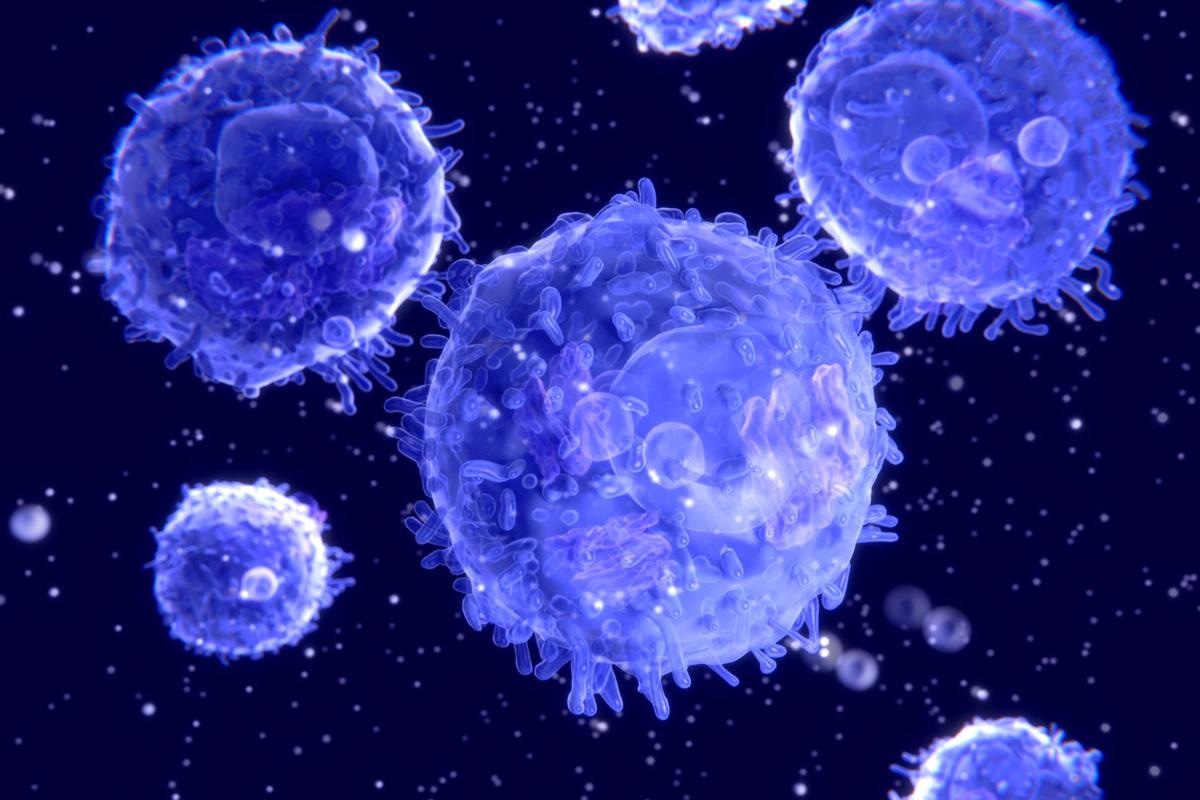Measuring T cell responses to SARS-CoV-2 vaccination and infection in healthcare workers with two different assays

The measurement of immune responses in partially and fully vaccinated individuals is desirable for comparing vaccination regimens, evaluating immunocompromised individuals, monitoring responses to emerging variants of concern, and determining the need for boosters as severe acute respiratory syndrome coronavirus 2 (SARS-CoV-2) vaccinations are rapidly rolled out across global healthcare systems.
 Study: Comparison of two T cell assays to evaluate T cell responses to SARS-CoV-2 following vaccination in naïve and convalescent healthcare workers. Image Credit: Juan Gaertner/Shutterstock
Study: Comparison of two T cell assays to evaluate T cell responses to SARS-CoV-2 following vaccination in naïve and convalescent healthcare workers. Image Credit: Juan Gaertner/Shutterstock
Immune response monitoring can help drive coronavirus disease 2019 (COVID-19) vaccine deployment plans, reducing the likelihood of infection and illness severity while also allowing for improved resource allocation. A variety of cross-sectional and prospective cohort studies of healthcare workers (HCWs) have been established to track immunological responses in people who have acquired immunity via vaccines or infections.
The PITCH Research (Protective Immunity from T-cells in Healthcare Workers) is a UK multi-centre prospective, observational cohort study in Oxford, Birmingham, Liverpool, Newcastle, and Sheffield that looks at T-cell responses in SARS-CoV-2 infection acquired through vaccination and/or infection. This setting was used by researchers to assess the use of the Oxford Immunotec T-SPOT Discovery SARS-CoV-2 assay (OI T-SPOT), as well as T cell measurement by the in-house IFN ELISpot assay using the PITCH protocol, which has been harmonized across the five PITCH centers.
The purpose of this study was to compare the Oxford Immunotec T-SPOT Discovery SARS-CoV-2 assay (OI TSPOT) with the in-house PITCH ELISpot for reporting T cell responses specific to SARS-CoV-2 spike and structural proteins. The ELISpot method is used in both experiments. Oxford Immunotec introduced the OI T-SPOT assay, an example of a commercial interferon-gamma release assay (IGRA), 15 years ago as a diagnostic test for Mycobacterium tuberculosis (T-SPOT.TB test).
A preprint version of this study, which is yet to undergo peer review, is available on the medRxiv* server.
The study
The OI T-SPOT and PITCH ELISpot assays showed T cell responses to spike antigens after vaccination, with the PITCH assay recording greater responses. In the naive cohort, median spike-specific T cell responses evaluated by OI Panel 1+2 and OI Panel 14 were 28 and 40 SFU/106 peripheral blood mononuclear cells (PBMCs), respectively, 6.0 and 4.2-fold lower than PITCH total spike at 2 dosage + 4 weeks. Although there was no statistically significant difference between OI Panel 1 and 2, median responses were numerically lower for OI Panel 1 and 2.
The median T cell response to SARS-CoV-2 M+NP in SARS-CoV-2 infection-naive HCWs at dose 2 + 4 weeks is 0 SFU/106 PBMCs in OI T-SPOT and 7 SFU/106 PBMCs in PITCH ELISpot. Both assays show significantly larger responses in previously infected cohorts than in naive samples at each time point, as expected. Because natural infection entails exposure to the whole SARS-CoV-2 proteome, including M+NP, only previously infected participants are predicted to develop T cell responses specific to SARS-CoV-2 structural proteins.
Vaccination with either BNT162b Pfizer/BioNTech or ChAdOx1 nCoV-19 AZD1222 exposes naive individuals to just SARS-CoV-2 spike protein; therefore, T cell responses to SARS-CoV-2 non-spike proteins should be negative. Some 'nave' volunteers, on the other hand, could have been exposed to SARS-CoV-2 without symptoms or seroconversion. Overall, this data support using both assays to detect changes in these responses between cohorts based on infection status.
Correlations between spike-specific T cell responses recorded by OI Panel 1+2, Panel 14, and PITCH total spike were examined at 1 dosage + 10 weeks and 2 doses + 4 weeks to further investigate the use of OI T-SPOT. At doses 1 + 10 weeks and 2 + 4 weeks, the observed correlation between OI spike panels and PITCH total spike is low to moderate, with the strongest correlation between OI Panel 14 and PITCH total spike at dose 2 + 4 weeks and the lowest correlation between OI Panel 1+2 and PITCH total spike at dose 2 + 4 weeks.
Panel 1+2 and Panel 14 on OI have a substantial correlation at both time points, as expected. Furthermore, because the correlations with PITCH total spike are similar in OI Panel 1+2 and OI Panel 14, either readout can be utilized to assess T cell responses to the SARS-CoV-2 spike. T cell responses to M+NP revealed by OI T-SPOT, and PITCH ELISpot had weak correlations.
Implications
The use of the OI assay for longer follow-up periods after vaccination and in immunocompromised individuals has to be evaluated further. Further research to increase its sensitivity could improve its utility in studying poor responders. T cell function can be measured in various ways, including antigen-specific interferon-gamma responses. Overall, the OI T-SPOT assay provides researchers with an effective and standardized method for comparing vaccine platforms, dosage techniques, and research projects.
*Important notice
medRxiv publishes preliminary scientific reports that are not peer-reviewed and, therefore, should not be regarded as conclusive, guide clinical practice/health-related behavior, or treated as established information.
Phillips, E. et al. (2022) "Comparison of two T cell assays to evaluate T cell responses to SARS-CoV-2 following vaccination in naïve and convalescent healthcare workers". medRxiv. doi: 10.1101/2022.02.05.22270447. https://www.medrxiv.org/content/10.1101/2022.02.05.22270447v1
Posted in: Medical Science News | Medical Research News | Disease/Infection News
Tags: Antigen, Assay, Blood, Cell, Coronavirus, Coronavirus Disease COVID-19, covid-19, Diagnostic, Healthcare, Immune Response, immunity, Interferon, Interferon-gamma, Protein, Proteome, Research, Respiratory, SARS, SARS-CoV-2, Severe Acute Respiratory, Severe Acute Respiratory Syndrome, Spike Protein, Syndrome, T-Cell, Tuberculosis, Vaccine
.jpg)
Written by
Colin Lightfoot
Colin graduated from the University of Chester with a B.Sc. in Biomedical Science in 2020. Since completing his undergraduate degree, he worked for NHS England as an Associate Practitioner, responsible for testing inpatients for COVID-19 on admission.
Source: Read Full Article